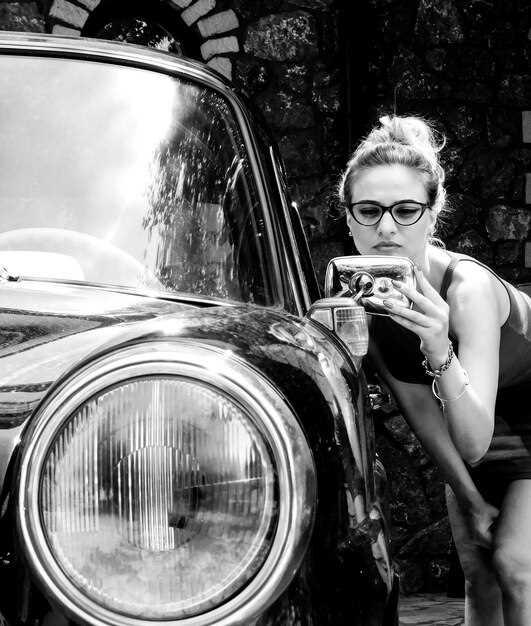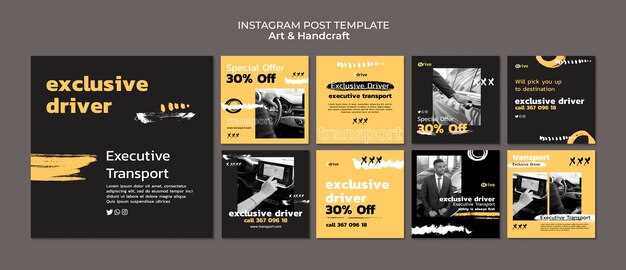
In the age of digital connectivity, social media has become an indispensable tool for enthusiasts, particularly within niche communities such as classic car fans. This vibrant community thrives on shared passion, knowledge, and the nostalgia that classic automobiles evoke. Understanding how to leverage social media effectively can be the key to fostering deeper connections and enhancing the overall experience of being part of this unique group.
To successfully engage in this lively media landscape, classic car enthusiasts must adopt strategies tailored to their interests. By creating content that resonates with fellow fans–such as restoration tips, car show highlights, and historical insights–participants can cultivate a loyal following. The goal is to not only share personal stories but also to spark meaningful discussions and interactions that are integral to community building.
Moreover, utilizing various social media platforms can help car aficionados expand their reach and connect with others beyond local boundaries. Each platform offers unique opportunities for engagement; for instance, Instagram thrives on visual content, making it ideal for showcasing high-quality images of classic cars, while forums and Facebook groups provide spaces for in-depth conversations and knowledge exchanges. By strategically using these platforms, classic car fans can enhance their visibility and enrich their community experience.
Creating Engaging Content That Resonates with Car Enthusiasts

To effectively engage classic car fans, it’s essential to create content that speaks directly to their passions and values. Car enthusiasts thrive in communities where they can share experiences, knowledge, and admiration for vintage vehicles. Therefore, your content strategy should focus on building a sense of belonging and shared interest through various social media platforms.
First, storytelling plays a crucial role in connecting with your audience. Share personal stories about the restoration of classic cars, memorable road trips, or the history behind iconic models. These narratives not only entertain but also foster emotional connections that resonate well within the community.
Visual content is another powerful tool. High-quality images and videos showcasing classic cars in action, during restorations, or at car shows can captivate and inspire enthusiasts. Encourage your followers to share their own visuals, creating a two-way interaction that enhances community involvement.
Engagement can be further amplified through interactive content. Polls, quizzes, and contests about classic car trivia or restoration challenges invite user participation. This interaction not only boosts engagement but also encourages followers to feel more invested in your content and community.
Utilizing user-generated content is equally important. Feature content from community members, such as their restoration projects or car collections. Highlighting such contributions fosters a collaborative environment, showcasing your platform as a space where enthusiasts can express themselves and be recognized.
Finally, staying informed on trends within the classic car scene and sharing timely content will position your brand as a knowledgeable leader in the community. Whether it’s vintage car events, new restoration techniques, or market trends, being a reliable source of current information will keep your audience engaged and coming back for more.
Building a Strong Online Community Through Collaborations and Events

Creating a vibrant online community for classic car enthusiasts involves strategic collaborations and events that foster engagement and connection among members. Leveraging media platforms effectively can amplify these efforts.
Key steps to build a strong community include:
- Collaboration with Influencers:
Partner with influencers in the classic car sector. They can help promote your community, share knowledge, and build credibility. Look for individuals who resonate with your audience.
- Organizing Virtual Meetups:
Host online events, such as webinars, Q&A sessions, or live car showcases. This allows members to connect regardless of location, fostering a sense of belonging.
- Interactive Content Creation:
Encourage community members to share their stories, photos, and videos of their classic cars. User-generated content not only enhances engagement but also creates a sense of ownership within the community.
- Collaborative Projects:
Launch community projects, such as restoring a classic car together or organizing charity events. These activities can strengthen bonds and create shared memories among members.
- Promoting Local Events:
Support local car shows or exhibitions by promoting them on your media channels. Encourage members to participate and share their experiences. This creates a tangible connection beyond the digital realm.
By implementing these strategies, classic car fans can build a dynamic online community that thrives on collaboration and shared experiences. Engaging members through events and partnerships will not only strengthen connections but also enhance the overall passion for classic cars.
Utilizing Analytics to Tailor Your Approach for Maximum Reach
To effectively engage the classic car community on social media, leveraging analytics is essential. By examining data from your social media channels, you can gain insights into what resonates with your audience. Metrics such as engagement rates, reach, and audience demographics help pinpoint what type of content engages car enthusiasts most.
Start by analyzing post performance. Look for patterns in likes, shares, and comments to determine which topics and formats drive interaction. If a specific classic car model generates significant buzz, consider creating a series of posts around that vehicle, including restoration tips or history. This tailored approach reinforces community interest and encourages more followers to join the conversation.
Audience demographics are another critical aspect. Understanding your followers’ age, location, and interests allows you to craft content that appeals directly to their preferences. For instance, if a majority of your audience is interested in vintage restorations, utilize that information to post how-to videos or restoration timelines that cater to their needs.
Additionally, monitoring peak engagement times can optimize your posting schedule. Analyze when your audience is most active, and aim to publish during those windows for maximum visibility. By aligning your content strategy with analytical insights, you can build a stronger online presence within the classic car community.
Lastly, don’t overlook the importance of feedback. Encourage your followers to engage with polls or questions, which not only boosts interaction but also guides future content creation. Incorporating data-driven decisions fosters a more dynamic social media strategy, ensuring that your efforts resonate with classic car fans and broaden your reach effectively.


